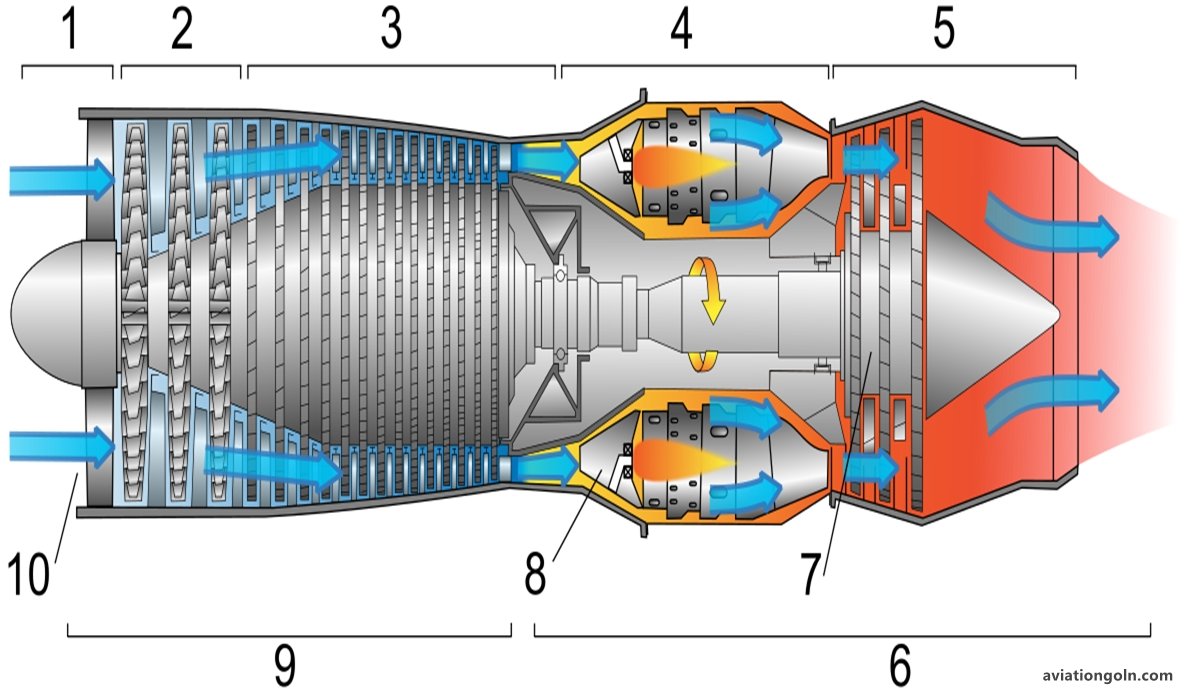Ramjet and Scramjet Engines: In the captivating arena of aerospace engineering, engines designed to propel aircraft to the boundaries of speed and altitude continue to captivate imaginations. Two such marvels of engineering, the ramjet and the scramjet, are built to operate in high-speed, high-altitude environments where traditional jet engines would falter. This article dives deep into the realm of these advanced propulsion systems, elucidating their design, operation, challenges, and groundbreaking implications for aviation and beyond.
Ramjet and Scramjet Engines: Types of Aircraft Engines

1. Introduction
Before we delve into the specifics, it’s pivotal to understand that ramjets and scramjets are air-breathing engines. Unlike rockets, which carry both fuel and an oxidizer, these engines take in atmospheric oxygen to burn fuel.

2. Ramjet Engines: The Basics
2.1 Definition: The ramjet, or “ram-air jet,” is a type of jet engine that compresses incoming air purely using the aircraft’s forward motion.
2.2 Working Principle: A ramjet operates by effectively “ramming” air into its combustion chamber at high speeds. This incoming air is then mixed with fuel and ignited, producing thrust.
2.3 Key Components:
- Intake: Channels and compresses incoming air into the combustion chamber.
- Diffuser: Decelerates incoming high-speed air, increasing its pressure.
- Combustion Chamber: Where the compressed air mixes with fuel and ignites.
- Nozzle: Expels hot gases to produce thrust.

3. Scramjet Engines: Pushing the Boundaries
3.1 Definition: The term “scramjet” stands for “supersonic combustion ramjet.” It’s a variant of a ramjet engine in which the combustion process occurs in supersonic airflow.
3.2 Working Principle: Like the ramjet, a scramjet compresses incoming air. However, unlike its counterpart, it maintains airspeed at supersonic levels throughout the engine.
3.3 Key Components:
- Intake: Gathers air at supersonic speeds and directs it into the combustion chamber.
- Combustion Chamber: A place for fuel injection, mixing, and supersonic combustion.
- Nozzle: Channels the exhaust gases, producing thrust at even greater speeds.

4. Operational Envelope and Limitations
4.1 Ramjets: These engines don’t function well at low speeds. They typically start operating efficiently around Mach 2 and can push to speeds of Mach 6.
4.2 Scramjets: Designed for hypersonic speeds, scramjets operate effectively from about Mach 5 to potentially Mach 15 or more.

4.3 Challenges:
- Starting Mechanism: Neither engine can operate from a standstill. They require another propulsion system to reach operational speeds.
- Heat Management: The immense speeds generate extraordinary temperatures, necessitating advanced materials and cooling techniques.
- Fuel Efficiency: At such high speeds, ensuring efficient combustion and thrust generation is challenging.

5. Advantages Over Traditional Jet Propulsion
5.1 Simplicity: Without moving parts like turbines or rotors, the design can be more straightforward. 5.2 Higher Speed Potential: Designed for high-speed flight, they have the potential to push the boundaries of current aviation speeds. 5.3 Lighter Weight: Not carrying an oxidizer, as rockets do, can reduce the craft’s weight.
6. Real-world Applications and Milestones
6.1 X-43 and X-51: NASA’s X-43 was the first scramjet to maintain flight, reaching Mach 9.6. The X-51, a joint venture between the U.S. Air Force, NASA, Boeing, and Pratt & Whitney, achieved a sustained flight at Mach 5.
6.2 Hypersonic Missiles: Countries are researching scramjet-powered missiles that can travel at extraordinary speeds, making interception challenging.
6.3 Potential Space Launch Systems: In the future, these engines might be integrated into space launch systems to efficiently reach the upper atmosphere before switching to rocket propulsion.
7. The Future of Ramjets and Scramjets
7.1 Material Advancements: To handle the extreme temperatures and stresses, advancements in materials science, including heat-resistant composites, are essential.
7.2 Integration with Other Systems: Combined propulsion systems, which integrate turbojets, ramjets, and scramjets, could be the key to seamless flight from standstill to hypersonic speeds.
7.3 Environmental Considerations: As with all propulsion technologies, minimizing environmental impact, particularly in terms of sonic booms at such high speeds, will be a concern.

The quest for speed has always been a driving force in aerospace engineering. Ramjets and scramjets represent the pinnacle of this pursuit, offering the tantalizing possibility of rapid intercontinental travel or even more efficient space launches. As research continues and technology advances, these engines may well redefine the boundaries of flight, ushering in a new era of aviation and space exploration.
Read more:
